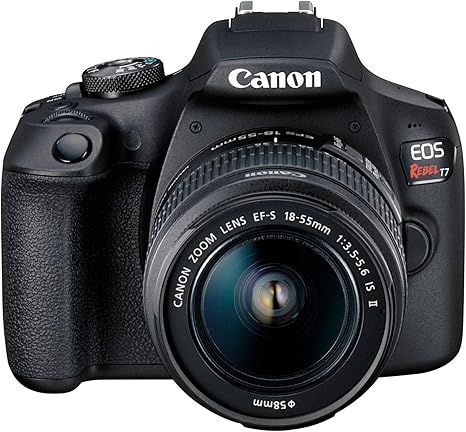Overview
Cameras are an essential tool for capturing moments, whether for professional use or personal enjoyment. From compact point-and-shoots to professional DSLR and mirrorless cameras, the range of options available today provides flexibility for all types of photography. In the world of digital photography, choosing the right camera means finding the right balance between convenience, image quality, and functionality.
Key Specifications and Features
- Resolution (Megapixels):
The resolution of a camera is one of the most important specifications. It determines the level of detail in the images. Higher megapixels allow for larger prints and more detailed shots. Most consumer-grade cameras range from 12MP to 30MP, while high-end models can go beyond 50MP.
- Sensor Size and Type:
The size of the image sensor directly impacts the quality of the images, especially in low-light conditions. Larger sensors (like full-frame and APS-C) capture more light and offer better dynamic range, producing sharper and more detailed images. CMOS and BSI sensors are commonly used in most modern cameras for their high-quality performance.
- ISO Range:
A camera’s ISO range determines its sensitivity to light. A higher ISO range allows photographers to shoot in lower light conditions without sacrificing image quality. However, higher ISO settings can introduce noise, which can reduce image clarity. Good cameras have an ISO range that can go up to 6400 or even higher.
- Autofocus System:
Fast and accurate autofocus is crucial for sharp photos, especially in dynamic settings like sports or wildlife photography. Modern cameras come with various autofocus systems, such as phase-detection, contrast-detection, and hybrid systems, which are excellent for fast-moving subjects.
- Video Capabilities:
Many cameras today offer impressive video features, such as 4K resolution and high frame rates for smooth, cinematic video. Professional photographers and videographers often look for cameras that can shoot in high definition with smooth autofocus for video capture.
- Image Stabilization:
To avoid blurry images caused by camera shake, many cameras feature built-in image stabilization systems (IBIS). This is particularly important for handheld shooting, especially in low light or when using telephoto lenses.
- Lens Compatibility:
Camera bodies often come with interchangeable lenses, and the compatibility of the lenses with the camera body is key for expanding photographic possibilities. DSLR cameras typically use lenses with specific mounts, while mirrorless cameras use different systems, such as the L-mount or Sony E-mount.
- Build Quality and Weather Resistance:
The build quality of a camera is important for its durability, especially if you shoot in harsh environments. Many high-end cameras are weather-sealed to protect them from dust, rain, and extreme temperatures, making them ideal for outdoor and adventure photography.
- Connectivity and Display:
Many modern cameras offer wireless connectivity features, like Wi-Fi or Bluetooth, for easy file transfers and remote control via smartphones. LCD screens or electronic viewfinders provide live views of subjects, and some cameras offer touch-sensitive screens for easier navigation and focusing.

Reviews
There are no reviews yet.